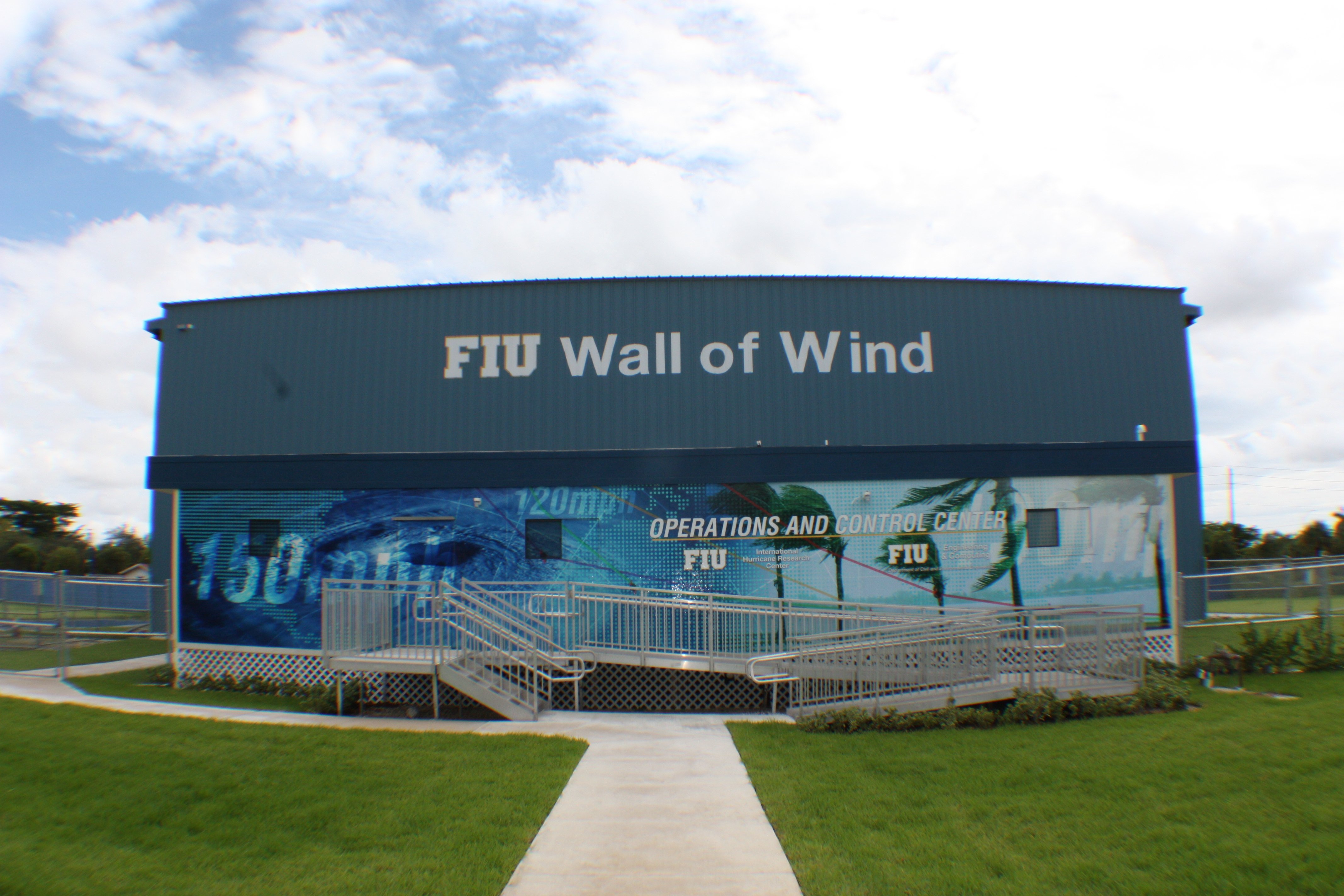NHERI Wall of Wind Experimentation Advances Fluid Mechanics Research
Published on July 6, 2017

A research team from Rensselaer Polytechnic Institute has been awarded an NSF grant to investigate the flow mechanisms that cause very high suctions on buildings. This project is led by Chris Letchford, professor and head of the Department of Civil and Environmental Engineering at RPI, and it is titled, Model to Full-Scale Validation of Peak Pressure Mechanisms in Buildings that Cause Cladding Failures and Windstorm Damage (NSF award #1727401).
 The RPI team will carry out near full-scale tests at the NSF NHERI Wall of Wind (WOW) experimental facility at Florida International University. The project aims to determine if current, small-scale wind tunnel-tests are able to reproduce very high suctions as well as determine which incoming flow characteristics are most critical in causing the high suctions. This project demonstrates how the NHERI WOW site can be implemented to advance fundamental fluid mechanics research.
The RPI team will carry out near full-scale tests at the NSF NHERI Wall of Wind (WOW) experimental facility at Florida International University. The project aims to determine if current, small-scale wind tunnel-tests are able to reproduce very high suctions as well as determine which incoming flow characteristics are most critical in causing the high suctions. This project demonstrates how the NHERI WOW site can be implemented to advance fundamental fluid mechanics research.
Fundamental to wind engineering is the need to understand and model the underlying physics of flow separation that affects wind loading on civil infrastructure (e.g., buildings). Unlike any other engineering domain, these structures are not prototyped but rely almost exclusively on wind tunnel tests at vastly reduced length and lower velocity scales. Wind tunnel results are rarely validated due to the complexity of instrumenting the prototype structure and the long duration required to observe design events. Most windstorm damage to buildings is initiated with cladding failures at locations where very high suction pressures are observed on the building, typically near corners and edges where the flow separates from the structure under peak and fluctuating pressures. Wind tunnels have become ubiquitous for obtaining wind loads on all types of structures, but discrepancies between peak and fluctuating pressures generated in the separated flow regions on roofs of low-rise structures modeled in boundary layer wind tunnels and observed in the field have been long-reported.
This project will investigate the flow mechanisms that cause these very high suctions at near full-scale. From parametric studies of separating flows, the modeling criteria critical to developing these peak pressures will be isolated and the ability to simulate them at reduced scales in typical wind tunnel studies will be ascertained. In this way, accuracy of traditional wind tunnel testing can be investigated and current experimental procedures improved and verified. This detailed knowledge will provide greater confidence in wind tunnel testing and generic wind tunnel data for engineers to use, and ultimately translate to reduced windstorm damage to civil infrastructure.
Data from this project will be archived and made available in the NHERI Data Depot.







